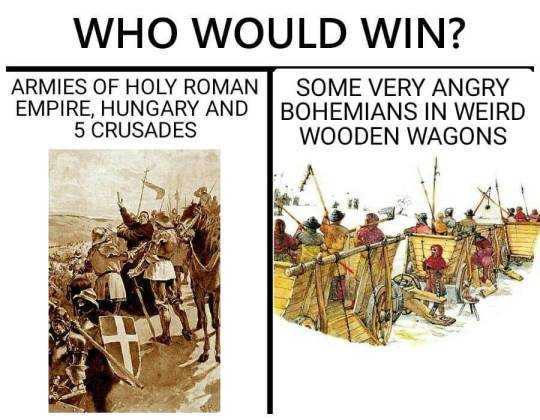#Hussite
Photo
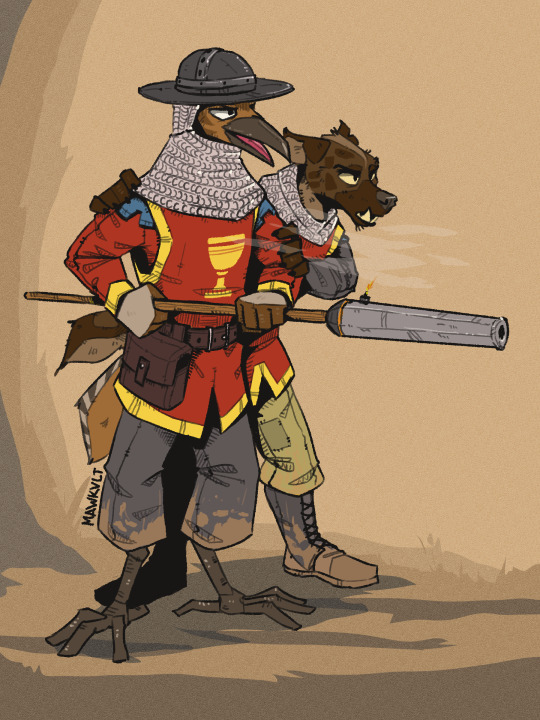
Hussite Handgonners
238 notes
·
View notes
Text
youtube
Hussite Wagon Forts --- A Challenge to Late Medieval Heavy Cavalry
from SandRhoman History
41 notes
·
View notes
Text
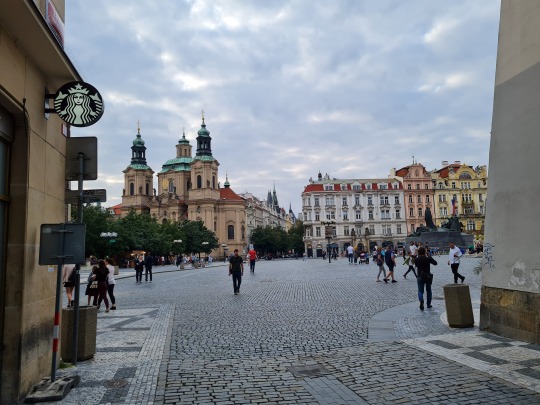
View on Old Town Square, with its Baroque St. Nicolas Church
This church was built from 1732 until 1737, according to the design of Kilián Ignác Dientzenhofer. Earlier, a Gothic parish church stood here, which burned down.
It is the main church of the Czechoslovak Hussite Church.
#prague#praha#prahacity#praha1#old town square#staromestskenamesti#czech republic#czechia#czech tumblr#czech#bohemia#cathedral#cities#europe#church#religious#christian#hussite#st nicholas#st. nicholas#baroque#church architecture#urban#city#city square#town square#travel#travel photography#traveling#travelblogger
5 notes
·
View notes
Text
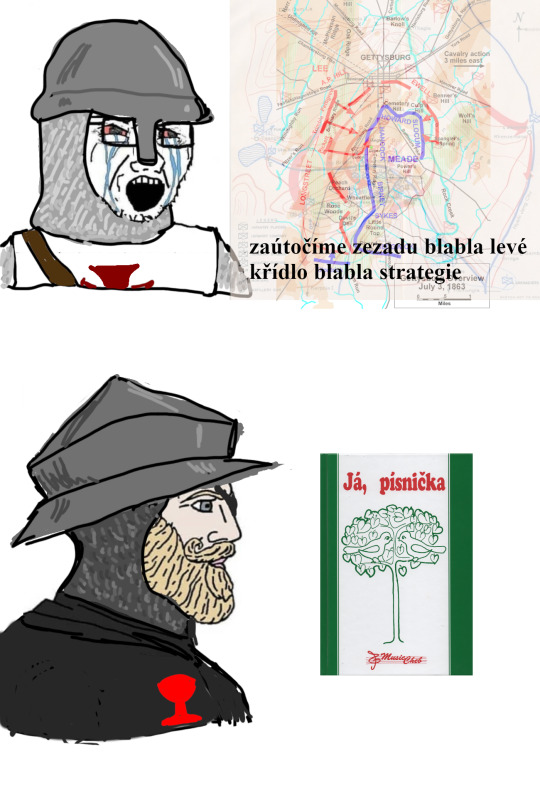
vozová hradba go brrr
371 notes
·
View notes
Text


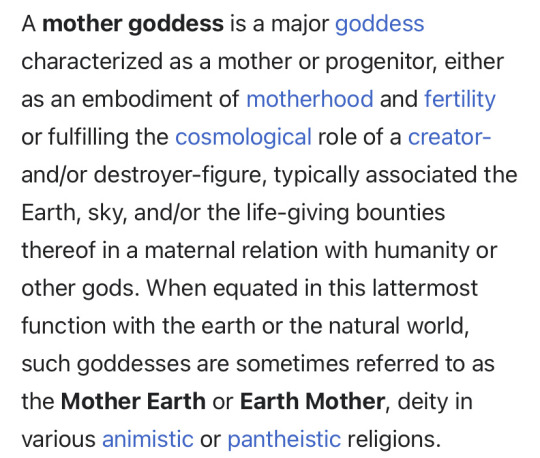
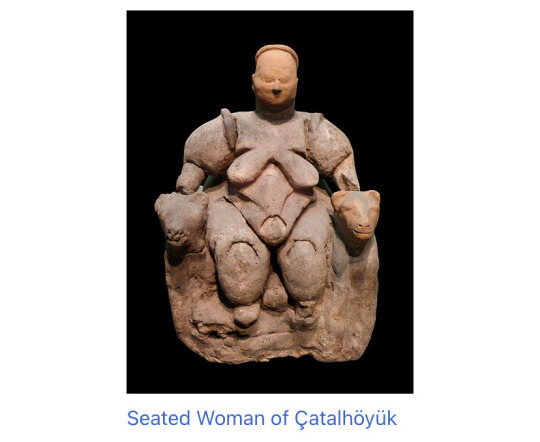

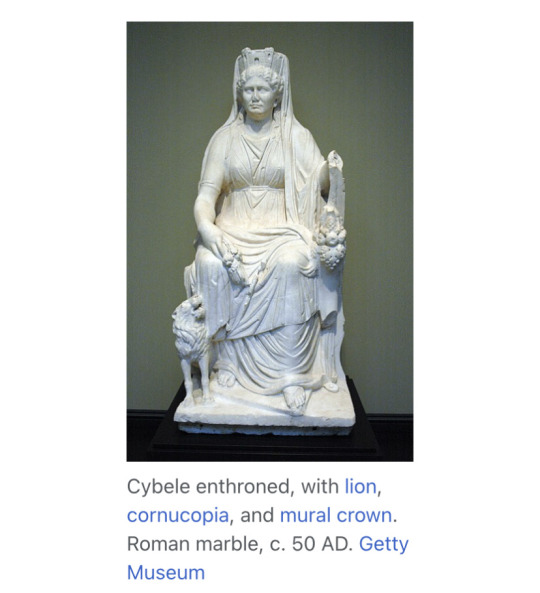
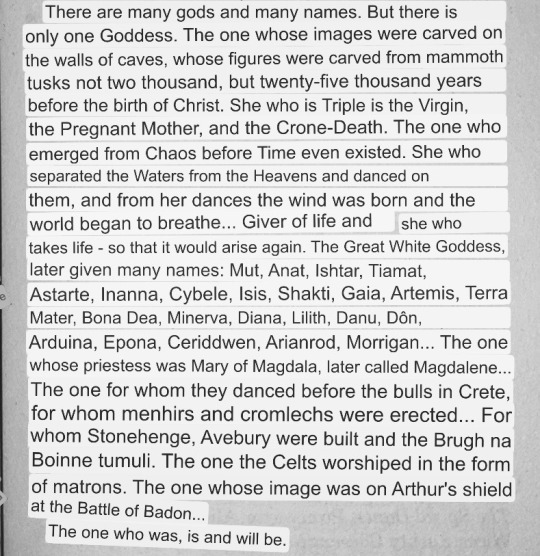
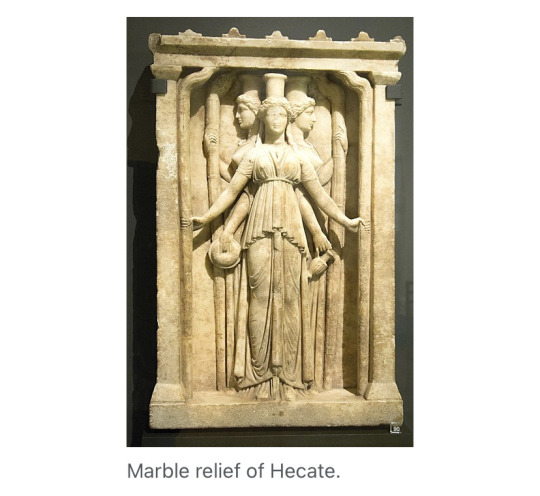


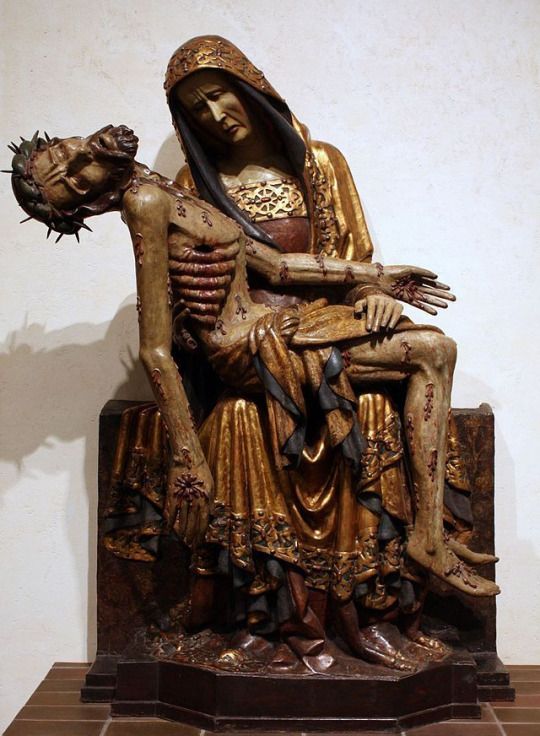

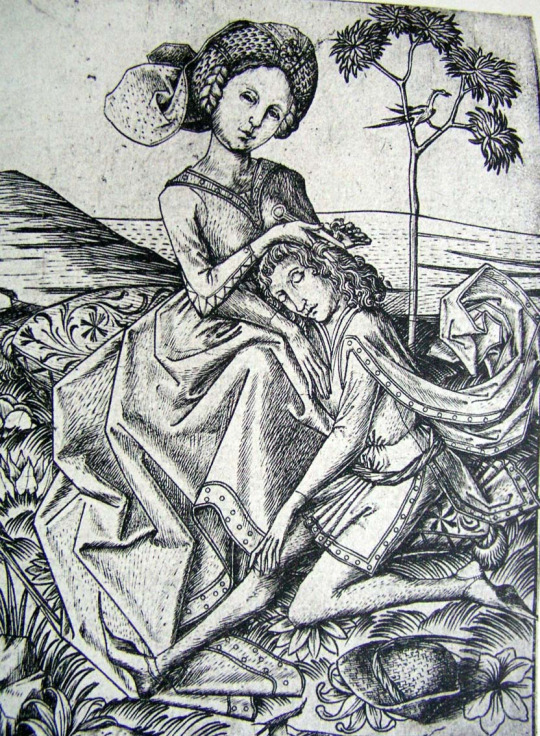




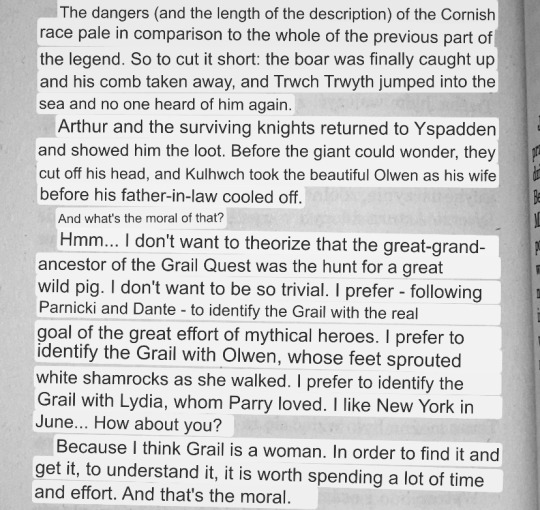

women, magic, power... grail
andrzej sapkowski interviewed 2000 / lysistrata, illustrated by norman lindsay / mother goddess, wikipedia / seated woman of çatalhöyük / tower of fools / cybele / świat króla artura / hecate / tower of fools / catholic mariology, madonna of the rose bower / pietà of the lubiąż abbey (lower silesia, poland) / warriors of god / samson and delilah, master e.s. / the last wish / the vampire, by philip burne-jones / tower of fools / sir galahad receives the holy grail, edwin austin abbey / świat króla artura / lady of the lake
[terf/radfem DNI]
#web weaving#andrzej sapkowski#the witcher#the witcher books#hussite trilogy#the world of king arthur#excerpt#geralt#yennefer#ciri#s: you've condemned yourself to me#s: my aucassin pursued for love#reynevan#jutta de apolda#i like a gershwin tune... how about you?
135 notes
·
View notes
Text
Sapkowski the Pagan: The Grail & The Goddess

Andrzej Sapkowski and Stanisław Bereś. 2005. Historia i fantastyka
One of the more fascinating features of Sapkowski's writing is the intertextuality of his works; their relation not only to preceding legends and fantasy, but also to his own works. There are several topics and ideas that repeat, in various shapes, throughout. As I am going through the Hussite Trilogy right now, I am taking notes.
Among his works I herein count The Witcher, The Hussite Trilogy & The World of King Arthur. Maladie. The latter must constitute the closest we have gotten so far to authorial research notes on ideas of interest.
The ley lines (so far):
Humanim, i.e. decency
(Erotic) Love's salving & dooming qualities
Amantes amentes. Those who love are out of their minds.
Take heart. Have pity.
Woman, the Grail of being
Fairy tales brought to life (but there's a snag)
Prophecies/Grand narratives
Folk stories & beliefs
Witchcraft
The Cult of the Goddess, the Great Mother, The One who is Three
The perishing of the old (but not quite disappearing) & the brutal onset of the new. Change and upheaval.
Common sense vs idealism vs pragmatism
Anti-taxes, anti-clergy
Anti-fanaticism
The Grail & The Goddess
"For the Goddess has many names. And still more faces."
First, Andrzej Sapkowski construing Ciri as The Holy Grail is documented. It's not merely conjecture based on the text(s), although the text overwhelmingly declares it.
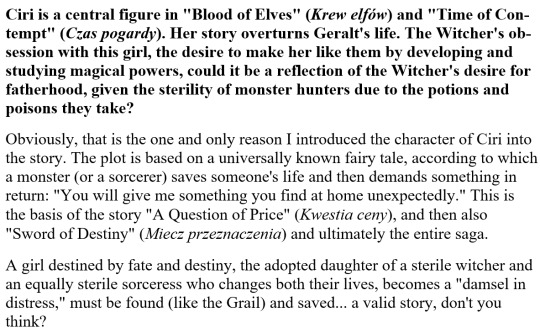
Cutali, Daniele. 2015. Interview with Andrzej Sapkowski
But so what?
The Witcher is an extremely allusive and meta-literary work. It deconstructs mythical matter and fantasy canon in the same breath as establishing itself in the eternal mythical present of legends. It completes itself as a self-aware analogue, because everything has already happened, and everything has already been written about. And Ciri - Cirilla Fiona Elen Riannon - sits at the centre of its method and madness; not only the axis of plot events, but also the spindle of its meta text. It's apparent already in her name. O Elaine, O Rhiannon. All Christian legends have a pagan origin. This Polish newborn has Arthurian origins. And Arthurian itself…?
In The World of King Arthur, Andrzej Sapkowski gives his account of the Arthuriana's transformation through centuries of re-writes. It is self-evident for him that for anyone to understand anything at all about Arthur, they need to orient in the history of the British Isles and in Celtic mythology.[1] Arthur was, in all probability, a Celt. And so was the Grail, if not even more ancient. 'The Grail - like almost every element of the Arthurian legend - has its origins in Celtic mythology. This is absolutely certain and has been confirmed many times,' he writes in Świat króla Artura. So what did Arthur believe? What views and values lay at the heart of the world in which he originated? Why is this relevant for a more meaningful reading of The Witcher?
Because the world of the Celts, as so many pre-Christian cosmologies, was a living world - an animistic, self-eating and self-renewing entity, cyclical, circular, without beginning or end, embracing life out of death - and Ciri is a living Grail. Ideas repeat in Andrzej Sapkowski's writing.
Ciri, a living Grail. A girl. A young woman. A Goddess. She who is Triple. A source of rebirth and hope, of death too. Strange magic is enclosed in her veins, as in Ceriddwen's Cauldron, that is of the essence of life. Cauldrons abound in Celtic mythos (be you Dagda, hero Cuchulainn, Brân or Pwyll, you got your hands on a cauldron eventually). But Ciri does not need to be rendered an artefact in order to hold power, because… she is a woman. That alone is enough.
Sapkowski's appreciation for compelling female characters should be well-known.
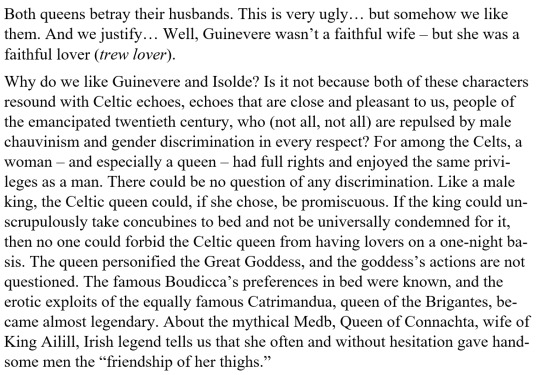
Sapkowski, A. 1995. The World of King Arthur. Maladie
'Celtic mythology,' Sapkowski notes in Świat, 'is mainly about the love life of the gods.' Gods fighting, scheming, and transcending themselves for goddesses. It's called the oldest story in the world; girl meets boy. But that's not quite the beginning of it: in the beginning, we're all born to a mother.
The Grail's functions and characteristics are notably maternal and feminine, and the mystery and nature of the Grail's power is love.

Sapkowski, A. 1995. The World of King Arthur. Maladie
Great, White, Triple
Who? And what features?
The ability to provide food is the property of the Grail most often referred to. Nourishment. Revitalization. Mother is the only parent who may truly feed her child with her body. Or give birth. The Chalice symbolically representing the "Womb of the Mother" is a very old idea. Old and basic. The most basic. Bernard of Clairvaux even calls upon Mary, saying: "Offer your son, sacred Virgin, and present the blessed fruit of your womb to God. Offer the blessed host, pleasing to God, for the reconciliation of us all" (qtd. in Bynum, 268). But we'll talk about the role of Christianity and symbolism another time. For first, we are pagans.
"Drawing from various sources, I assumed that – although I am not a blind follower of this theory – the feminine element dominates in nature. If there is any cult not related to politics, it is the cult of the Great Mother, the Goddess. The belief in the male God, Yahweh, worshiped by Jews, had a political character – Yahweh was invented because he had to be invented to maintain certain social structures. For primitive people, the mysterious, divine element was exclusively femininity, the ability to give life. However, I emphasize that I am not defending these theories from a religious studies standpoint; they simply resonate with me."
- Andrzej Sapkowski and Stanisław Bereś. 2005. Historia i fantastyka
This idea that resonates with Andrzej Sapkowski so strongly as to appear in virtually everything he has written was re-kindled as an ideology by the neo-Celtic, neo-pagan Wicca movement (Gardner, Murray, Starhawk, et al). Foundational text: The White Goddess by Robert Graves. The idea precedes the Celts though, and, at heart, revolves around nature and man being inseparable.
Ceridwen is one of the forms of the Celtic Goddess, and her cauldron is the womb-cauldron of rebirth and inspiration. In early Celtic myth, the cauldron of the Goddess restored slain warriors to life. It was stolen away to the Underworld, and the heroes who warred for its return were the originals of King Arthur and his Knights, who quested for its later incarnation, the Holy Grail. The Celtic afterworld is called the Land of Youth, and the secret that opens its door is found in the cauldron: The secret of immortality lies in seeing death as an integral part of the cycle of life. Nothing is ever lost from the universe: Rebirth can be seen in life itself, where every ending brings a new beginning.
Most Witches do believe in some form of reincarnation. This is not so much a doctrine as a gut feeling growing out of a world view that sees all events as continuing processes. Death is seen as a point on an ever-turning wheel, not as a final end. We are continually renewed and reborn whenever we drink fully and fearlessly from “the cup of wine of life.”
- Starhawk. 1979. The Spiral Dance
Nature's heartbeat resounds in reincarnation through reproduction. The gentle fury of love.
“Listen to the words of the Goddess, whose arms and thighs are wrapped around the Universe!” called the shaman. “Who, at the Beginning, divided the Waters from the Heavens and danced on them! From whose dance the wind was born, and from the wind the breath of life!”
“I am the beauty of the green earth,” said the Domina, and her voice was like the wind from the mountains. “I am the white moon among a thousand stars, I am the secret of the waters. Come to me, for I am the spirit of nature. All things arise from me and all must return to me, before my visage, beloved by the gods and mortals.”
“Eiaaa!”
“I am Lilith, I am the first of the first, I am Astarte, Cybele, Hecate, I am Rigatona, Epona, Rhiannon, the Night Mare, the lover of the gale. Black are my wings, my feet are swifter than the wind, my hands sweeter than the morning dew. The lion knows not when I tread, the beast of the field and forest cannot comprehend my ways. For verily do I tell you: I am the Secret, I am Understanding and Knowledge.”
"Worship me deep in your hearts and in the joy of the rite, make sacrifices of the act of love and bliss, because such sacrifices are dear to me. For I am the unsullied virgin and I am the lover of gods and demons, burning with desire. And verily do I say: as I was with you from the beginning, so you shall find me at the end."
Sapkowski, A. 2002. The Tower of Fools
It is for this reason the Irish recorded so many songs of aitheds - motifs of female abduction. It is for this reason one of the earliest legends of the search of the Grail is the tale of the hero Culhwch's quest for the hand of Olwen, who, wherever she stepped, made four white clovers bloom under her feet.[2] It is why Ciri, the living Grail in whom the function of the Goddess has been doubled, finds herself in a double-bind; as the keeper of power and immortality she is more frequently seen as means to an end rather than an end in herself. Not unusual for any failed relationship where the parties confuse love for something else. And while we are confusing notions of erotic and spiritual love, the Question of the Grail which must be asked of the Fisher King, undoubtedly, still comes down to a question about love.

Sapkowski, A. 1995. The World of King Arthur. Maladie
Celtic mythology is about the love life of the gods. The longing for a union; that completes. That turns the wheel and closes the cycle. That revitalizes, heals, nourishes, allows for flourishing. That immortalizes; if not oneself, then at least a moment. And what is life but fleeting moments, grains of sand passing through an hourglass?

Sapkowski, A. Something Ends, Something Begins
It can get confusing. The Goddess has many names and many faces, and three aspects.

Sapkowski, A. 1995. The World of King Arthur. Maladie
As to the inherent eroticism of the Grail, well…

Sapkowski, A. 1995. The World of King Arthur. Maladie
He wanted to tell her everything, but the words stuck in his tight throat.
She saw it. She knew. How could she not? For only in Reynevan’s eyes, stupefied by happiness, was she a maiden, a trembling virgin who was embracing him, eyes closed and biting her lower lip in painful ecstasy. For any wise man—had there been one nearby—the matter was clear: she was no shy and inexperienced young lass, but rather a goddess proudly receiving the homage due to her. And goddesses know and see everything.
And do not expect homage in the form of words.
She pulled him onto her and the eternal rite began.
- Sapkowski, A. 2002. The Tower of Fools
Sapkowski's interest for the fates of men in the power of the Goddess is only surpassed by his hope for the triumph of common sense and humanism. And the mystery of the Grail - what unleashes its power? - is of both sexual and platonic variety. Humanity is important. Heart. As in Wolfram von Eschenbach's Parzival. As per Campbell: 'The big moment in the medieval myth is the awakening of the heart to compassion, the transformation of passion into compassion. That is the whole problem of the Grail stories, compassion for the wounded king.' [4]
Thanks to Ciri, the story of Geralt of Rivia - a grail knight who set out with his hanza in search of a dream - is ennobled and raised on par with King Arthur. It is Yennefer and Geralt's love and compassion and sacrifice for Ciri, which ultimately heals them. An echo of love for his daughter melts the ice shard in the heart of an Emperor. The mystery and nature of the Grail's power resides in love.
"Love has many names,” said Hans Mein Igel suddenly, “and it will determine your fate, young herbalist. Love. It will save your life when you won’t even know that it is love. For the Goddess has many names. And still more faces.”
- Sapkowski, A. 2002. The Tower of Fools
By the end of The Witcher, Ciri's journey as the Goddess has barely begun. And what has begun has begun traumatically. Her journey to know herself, to find, forgive, understand, and accept (or reject) the Grail within, has not yet dawned. She remains in a liminal space between the Maiden and the Woman after having, already and much too early, worn the guise of Death, the Crone. The author doesn't tell; he lets the reader wonder. For before Ciri is everything. But Grail, the Goddess, requires something, and also empowers with what she requires.

Sapkowski, A. 2002. The Tower of Fools
Love leads spring into the Waste Land of the human heart.
Love, compassion, willingness to suffer with and for another, readiness to transcend one's own pain, selfishness, and rage. For three things last forever: faith, hope, and love - and the greatest of these is love.[3]

-----
[1]: Sapkowski mainly used Mythology by Thomas Bulfinch, Celtic Myth and Legend, Poetry and Romance by Charles Squire and Mabinogion.
[2]: In order to marry Olwen, Culhwch must take her from her father, but Ysbaddaden will first set him on an endless quest; a list of long and laborious tasks. In the name of a woman.
[3]: Or, as The Tower of the Swallow renders it: 'Are, then, Chaos, art and learning according to you, the Powers capable of changing the world? A curse, a blessing and progress? And aren't they by any chance Faith? Love? Sacrifice?'
[4]: Campbell, J. 1991. The Power of Myth
#wiedźmin#the witcher#the witcher books#andrzej sapkowski#the hussite trilogy#the world of king arthur#ciri#cirilla fiona elen riannon#wicca#the holy grail#arthuriana#the witcher meta
26 notes
·
View notes
Text
can't believe that they basically "ktož jsú boží bojovníci"-ed the harkonnens that one time
#dune part two#dune#dune 2#hello op here to explain the joke: 'ktož jsú boží bojovnící' was a war song of the czech hussites-#famous for enemies literally running away from battle once they heard it in the distance#at about the 1 hour mark the fremen chant muad'dib and their enemies flee in much the same fashion
10 notes
·
View notes
Text
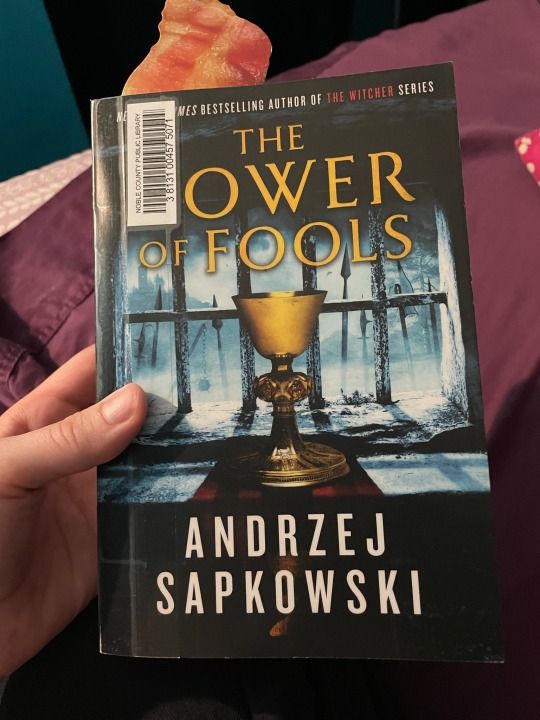
Im really surprised my local library in a small midwestern town had this book but not any of the Witcher books
So far I can tell Sapkowski loves framing devices involving historians and starting off with a sex scene involving creative purple prose, im sure I will find more similarities
#andrzej sapkowski#the tower of fools#the Hussite trilogy#Hussite trilogy#yes I have a bacon bookmark
13 notes
·
View notes
Text
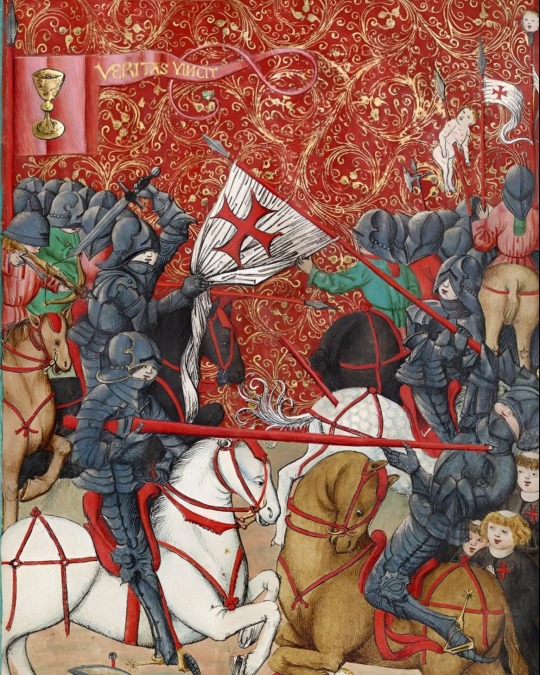
#knights#crusaders#crusades#medieval#art#history#jena codex#hussite wars#europe#cavalry#armour#middle ages#european#veritas vincit#bohemia#bohemian wars#holy roman empire
80 notes
·
View notes
Note
So what were the actual politics of the Hussites historically? I always find medieval heresies interesting but it feels like the discussion of "proto protestant" heresies in popularly available books tends to focus in on how much they actually were like later protestantism. Rather than taking them up on their own terms and actions. It seems interesting with the influence they took from Wycliffe, while actually being much more the motivating ideology for the revolt of the lower orders than Wycliffe's own beliefs were.
It's a bit tricky to analyze the "actual politics" of the Hussites of the Bohemian Reformation, because one of the things you come to understand about the Reformation, Counter-Reformation, the Wars of Religion, etc. is that religious symbolism can have really significant cultural politics in ways that can be very opaque and hard to understand for modern audiences.
(Take this as a strong hint for someone to ask me about how the Puritans of the English Civil War and colonial New England are completely misunderstood, especially on Tumblr.)
So leaving aside Jan Hus' broadly Wycliffian/proto-Lutheran position on religious issues like the need to fight corruption in the Church, the authority of the Bible over the Pope, opposition to indulgences, the critical importance of the vernacular Bible, and so forth - what were the politics of the Hussite movement?
Well, the Four Articles of Prague I think serve as a pretty good condensation of Hussite politics, although it's important to keep in mind that it was a political statement of the more conservative faction of the Hussites:
Freedom to preach the Word of God.
Freedom of the communion of the chalice (under both kinds also to laity).
Exclusion of the clergy from large temporal possessions or civil authority.
Strict repression and punishment of mortal public sins, whether in clergy or in laity.
So all of this sounds like it's more theology than politics, but if we analyze it, we can find the politics under the hood. Taking the first point, the Hussite movement was largely inspired by a popular revulsion to the Council of Constance burning Jan Hus at the stake despite the promise of safe conduct - so in reaction, they seemed to adopt a strong commitment to religious free speech.
Second, there is a strong emphasis on anti-clericalism: by the Middle Ages, the Catholic Church had come to emphasize the higher social status of the clergy over the laity by changing the ritual of communion such that, while communion in bread was given to the laity, only the priest was allowed communion in wine from the chalice. As a statement of social equality, the Hussites insisted that ordinary people should receive both forms of communion - and went one step further by insisting that children as well as adults should receive both - as a statement of the equality of all men before God.
Third, there is a strong dislike of Church corruption, which tended to emphasize the need for the clergy to devote themselves to poverty and spiritual matters rather than secular politics and moneymaking.
The more radical Hussites wanted to confiscate church lands and transfer them to secular hands, they believed that the Bible was the only authority for both religious and political matters, and they were very strict Biblical literalists who particularly emphasized Wycliffe's denial of transubstantion. In general, they tended to believe that society should be more democratic.
Finally, there's a strong element of Czech proto-nationalism: hence the emphasis on translating the Bible into Czech, and the successful defense of their religious independence during the Hussite Wars, where the Hussites took on the Pope (several Popes declared no less than five Crusades against the Hussite heretics), the Holy Roman Emperor, and the King of Bohemia in the Hussite Wars - and ultimately won, forcing the Catholic Church to recognize the Moravian Church.
(This is something of a simplification of a very complicated conflict, because there was also a civil war between the more conservative and more radical Hussites that saw the radicals militarily defeated and their church disbanded.)
20 notes
·
View notes
Photo
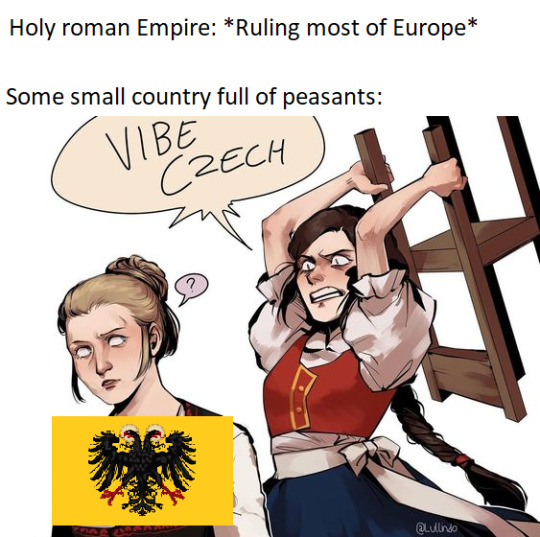
59 notes
·
View notes
Text
going to fuck around. hope i don’t find out
10 notes
·
View notes
Text
Around 600 years ago, a wealthy aristocratic family fled their home from a raging fire during the Hussite Wars, archaeologists believe. The clues come from a well-preserved medieval kitchen found under a house in the old town of Nový Jičín.
47 notes
·
View notes
Text
it kind of bothers me that witcher fans don’t really unite under sapkowski’s name like other fans of fantasy authors do (e.g. “tolkien fans”).
in practically any other fandom of fantasy books, save for the particularly rancid authors known for their disappointing and shameful behavior or views (e.g. jk r*wling), it’s just regular business to say the author’s name. but sapkowski’s name is treated like a dirty word in the witcher fandom, for really no good reason…
it must be asked — what is stopping us from doing so?! why don’t we call ourselves sapkowski fans. it would be much easier than saying “i’m a fan of the witcher, but only the books, i don’t consider the various adaptations canon, etc. etc.” … “half a hundred words, when three are enough!!”
#i was just thinking about this today. can we call ourselves andrzej sapkowski fans beginning now or what#note that i said GOOD reason#meaning that it’s not like sapkowski is a conservative#the witcher books#txt#like sapkowski has done and said stuff that i dont approve of or like#the alcoholism at cons for instance hem hem (though ive also heard that type of behavior was standard)#he’s said a few cringey things about women and lesbians but nothing worse than your typical old guy would#specifically i’m referring to the ‘i dont hate women i - he he he - positively love them!’ which is actually just everybodys granddad lmao#and the ‘i dont know about why my characters are lesbians - though i can be sure im not one’#that kind of stuff just makes me shake my head and laugh#but its not like he has done heinous shit like some of these authors running around loose out here#i mean i think it’s mitigated in part that he’s a private person with no twitter account#i also disgaree with his points from there is no gold in gray mountains but i also dont know enough abt what hes talking about to understand#understand FULLY at least. i understand some but not all. i think i understand just enough to disagree#but he has expressed a lot of progressive points which also come through in his series#what i mean is: hes not a terrible person. so why do people act like he is#ALSO i think if we united under his name then there would be more inter-series fans#ive always wondered where the fans of the hussite trilogy are (online). is there an online fanbase?#and if we do that then we can get more and better translations hopefully#like theres still no official translations for a ton of his short stories
82 notes
·
View notes



